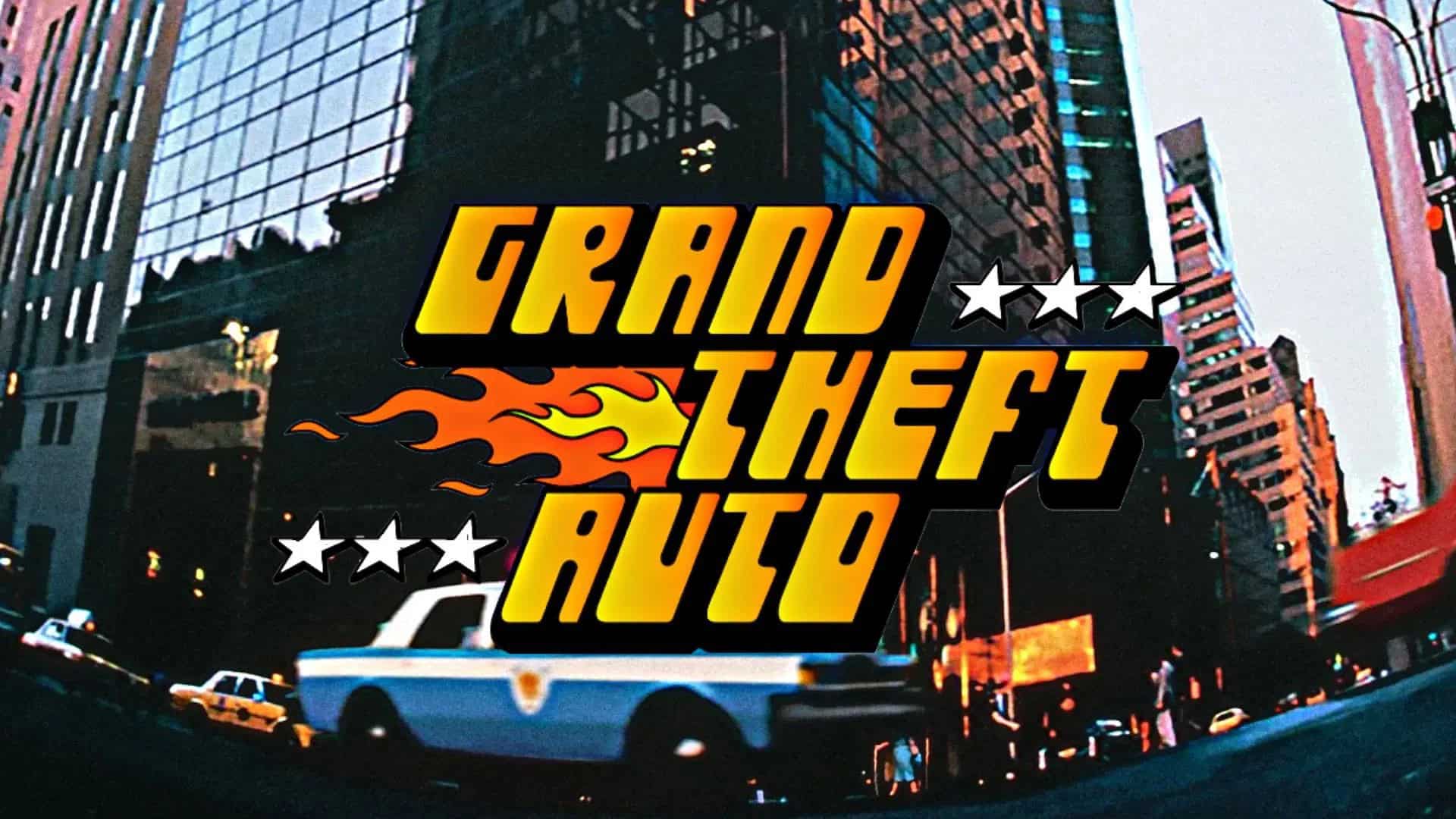Long before the Grand Theft Auto franchise became one of the best-selling IPs of all time, and even before the series revolutionized open-world gameplay and influenced entire generations of game design, a small Scottish studio known as DMA Design developed the first entry in the series. Mike Dailly and David Jones likely had no idea how important Grand Theft Auto would be to the medium of video games at the time, but the fact remains that Grand Theft Auto is a cultural force whose existence and trajectory continue to shape the industry itself. As the saying goes, “From humble beginnings come great things”, and Grand Theft Auto is simply a window into the future greatness that the series would achieve.
The general setup for Grand Theft Auto is about as simplistic as they come, with the player assuming the role of an aspiring criminal trying to climb the ladder of a lawless underworld. Unlike future entries in the Grand Theft Auto series that take place in fully 3D open-world sandboxes, the cities of the original Grand Theft Auto are 2D renders of real-life locations players view from a top-down perspective. As a result, human characters and automobiles take on a diminutive on-screen look, and the player gets to witness the chaos unfold from a bird’s eye view.
Aside from its original 2D, top-down perspective, though, the blueprints for the series’ groundbreaking gameplay are on full display in the original Grand Theft Auto. Like the games in the series that would come after it, the original Grand Theft Auto is all about giving the player unrestricted freedom in how they interact with both the game’s world and its denizens, for better or worse.
From Race n’ Chase to Grand Theft Auto
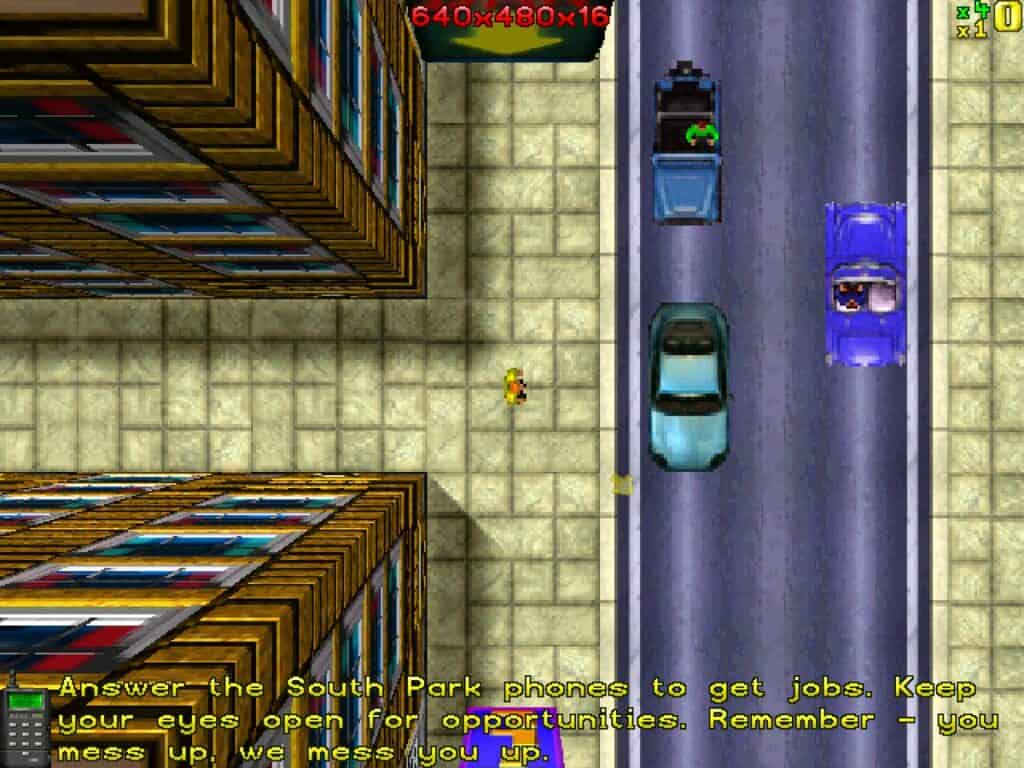
©Grand Theft Auto gameplay screenshot – Original
Though it’s now better known under its trade name Rockstar North, Rockstar Games UK Limited began its life in the mid-1980s with the founding of DMA Design. A collection of Scotland-based computer game enthusiasts and friends, the studio was founded in 1987 by David Jones, with Mike Dailly, Russell Kay, and Steve Hammond joining shortly thereafter. The studio was quickly picked up by UK-based publisher Psygnosis, and together the two enjoyed a fruitful partnership throughout the late 1980s and early 1990s that resulted in one of the most popular puzzle games of the era — Lemmings.
Lemmings‘ success aside, Sony would purchase Psygnosis as a first-party publisher in the lead-up to the release of the Sony PlayStation, leaving DMA Design without a home. After producing two smaller-scale titles and scrapping a project for the SNES, the studio would begin prototyping its next game. This title is none other than Race n’ Chase, the original prototype for Grand Theft Auto. In Race n’ Chase, the player controls a police officer in pursuit of criminals, which both Mike Dailly and David Jones found to be too dull of a concept. In a stroke of genius, the pair made the decision to switch which side of the legal fence players operate on, finding that controlling a lawbreaker working their way up the criminal ladder was much more fun than playing on the side of law enforcement.
With the project’s scope and vision set, DMA Design would set about the work of developing the original Grand Theft Auto beginning in 1995. Of course, making the game would prove to be easier said than done, with the title experiencing several critical delays throughout its development and failing to ship for two of the original 5 planned platforms.
Development and Release
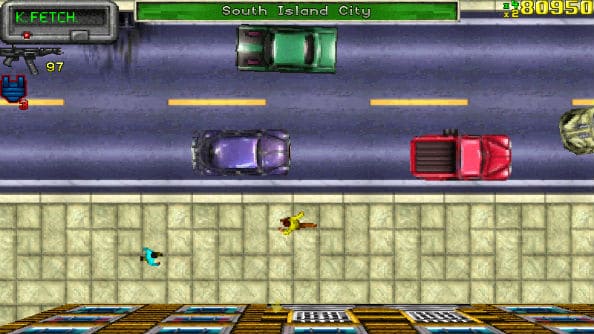
©Grand Theft Auto gameplay screenshot – Original
Once DMA Design reenvisioned Race n’ Chase as Grand Theft Auto, the actual work of developing the game could begin. One of the team’s primary inspirations was actually Pac-Man, with the general layout of the cities and the need to avoid pedestrians and other cars emulating the maze-maneuvering and ghost-avoiding gameplay of Namco’s coin-op classic. The game’s unique visuals would end up being one of the biggest challenges for DMA Design, with its use of animated pre-rendered drawings proving difficult to work with for many of the more inexperienced developers working on the project.
Thankfully, the fate of the original Grand Theft Auto would shift course with the addition of Gary Penn to the team. His experience as a game developer and creative direction for the title would lead to it finally taking shape in 1996 and eventually releasing on November 28, 1997. The original versions of the title for PC and MS-DOS would eventually receive ports to the PlayStation and Game Boy Color, with other ports to the Sega Saturn and Nintendo 64 becoming victims of cancellation. The PlayStation and Game Boy Color ports of the title would arrive in 1998 and 1999, respectively, with the Game Boy Color version significantly censoring the game’s content.
Reception and Controversy
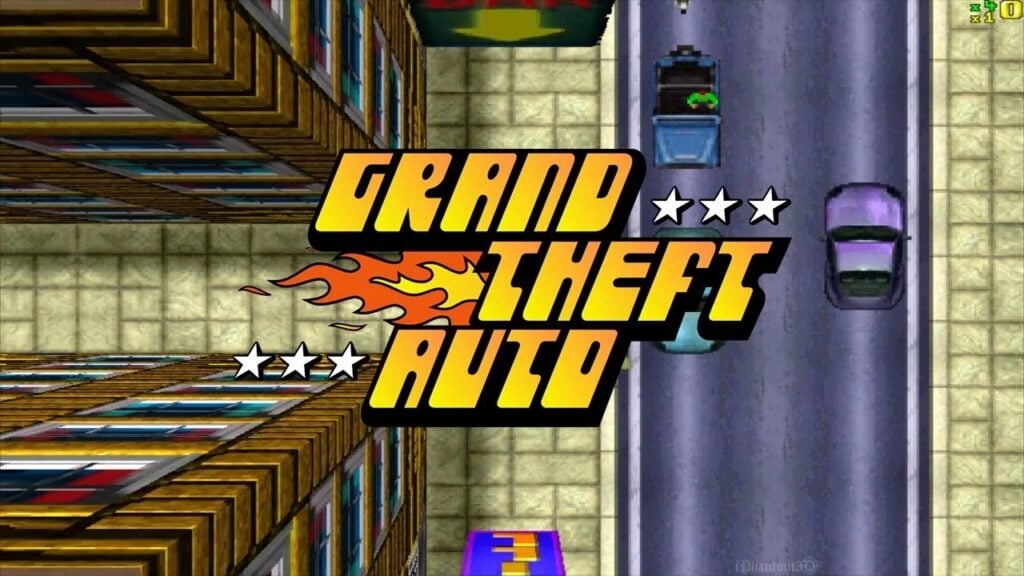
©Grand Theft Auto gameplay screenshot – Original
Before Grand Theft Auto‘s release, word of the game’s development and subject matter would become public knowledge and lead to a significant amount of real-world controversy surrounding the game. Notably, members of the British Parliament held public discussions about the possibility of attempting to ban its sale in the UK, though those efforts never materialized. In yet another stroke of genius that helped to solidify Grand Theft Auto as a household name, DMA Design enlisted the help of former tabloid journalist Max Clifford as the head of the title’s pre-release marketing campaign, who wisely used all of the negative controversy surrounding the game as a springboard for free press and notoriety.
Thanks to the attention Grand Theft Auto received before it ever reached store shelves, the title would quickly become one of the best-selling games in the UK the month of its release. By November 1998, Grand Theft Auto had surpassed 1 million units in sales and its PlayStation port was quickly gaining traction in North America. Regardless of the game’s commercial success, critical reviews of the original Grand Theft Auto paint a polarizing picture. Several outlets criticized the game’s visuals and simplistic gameplay, while others would accuse the title of being all style and no substance. Of course, the game’s lukewarm critical reception would do little to slow down its commercial success, with the game eventually selling more than 3 million units across its three versions.
Ports and Re-Releases
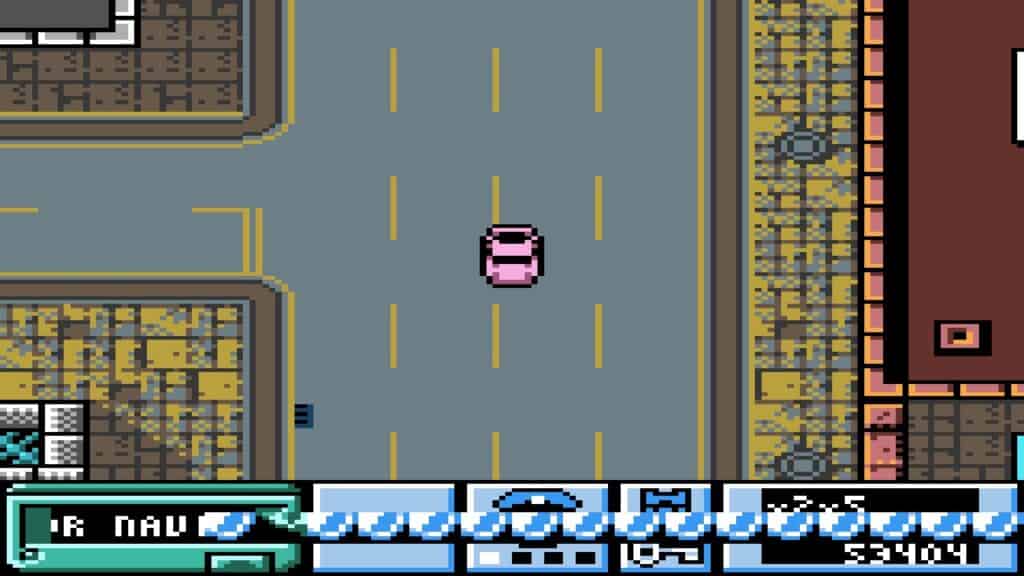
©Grand Theft Auto gameplay screenshot – Original
Bringing Grand Theft Auto to consoles was always a part of DMA Design’s strategy for the title. Sure enough, the PlayStation port of Grand Theft Auto would arrive less than a year after the game’s PC debut, quickly becoming a top-seller in the month of its release and retaining much of the core gameplay as the original version. That said, the PS1 port of Grand Theft Auto makes considerable compromises in order to run on the hardware. Notably, Grand Theft Auto on the PlayStation features far fewer pedestrians and cars moving around cities, fewer unique automobiles, and suffers from lower resolution and a muted color palette.
A year after the release of Grand Theft Auto on PlayStation, the title would make its way to the Game Boy Color in a port that is arguably a technical achievement and one of the most impressive titles on the system. However, like the PS1 version, the Game Boy Color release of Grand Theft Auto is vastly different from the PC original. In addition to its different visuals and lack of features, the Game Boy Color port of Grand Theft Auto is heavily censored in order to appeal to the handheld’s younger demographic. And, of course, the original Grand Theft Auto would find its way back onto the PlayStation hardware during the 7th console generation as part of the PlayStation 3’s PS1 classics library.
Grand Theft Auto’s Legacy
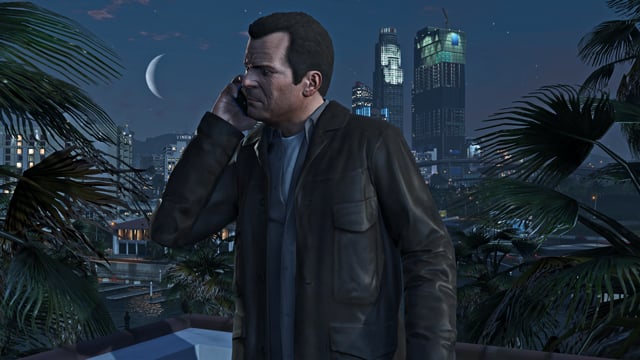
©Grand Theft Auto V gameplay screenshot – Original
Grand Theft Auto‘s success would pave the way for a sequel to arrive in 1999, Grand Theft Auto 2. However, it’s the third game in the series that would bring the franchise its greatest success and see the IP transform into a cultural force. Grand Theft Auto III‘s significance and impact on 3D game design position it as one of the most important games, as the title essentially serves as the foundational exemplar for the modern open-world action game. Rockstar Games itself continues to iterate and expand upon the original foundation from Grand Theft Auto III, with the series now approaching its sixth entry as gaming’s most popular open-world experience.
The success and impact of Grand Theft Auto III (as well as the controversy surrounding its content) serve as the building blocks for the series’ future, with the Grand Theft Auto IP now ranking as one of the most successful game franchises of all time. To date, the Grand Theft Auto series holds lifelong sales of almost $10 billion across more than 400 million units. Just the initial reveal trailer for Grand Theft Auto VI would quickly break single-day records for YouTube video viewership. And that’s without even mentioning the runaway success of Grand Theft Auto V‘s Grand Theft Auto Online mode, which continues to be one of the most popular online games and earns millions every month for Rockstar.
Despite Grand Theft Auto‘s relatively humble beginnings, Rockstar Games and Take-Two are now the stewards of one of gaming’s most seismic franchises, with every move Grand Theft Auto makes reverberating throughout the industry. In terms of pop culture relevance, importance to open-world game design, and biting satirical observations of the human condition, no franchise can compare to Grand Theft Auto.
The image featured at the top of this post is ©Grand Theft Auto key art.
